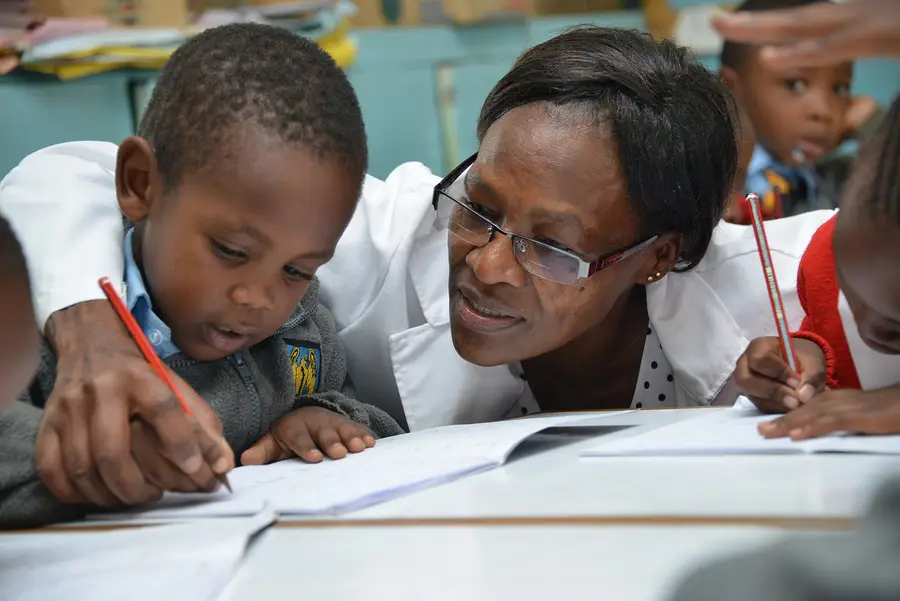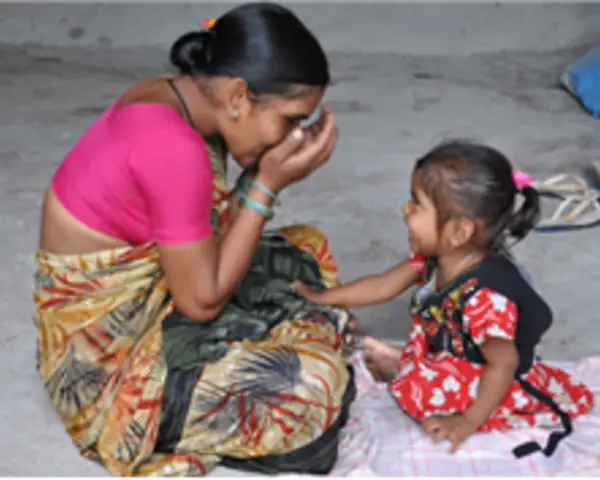
Around the world, more than 250 million children under age five are at risk of not reaching their development potential, often because of adversities that they face early in life including poverty, poor health and nutrition, insufficient learning opportunities, and more.
But what if there is a way to mitigate these adversities when children are young? What impact would that have on their development, their lives, and their communities?
We explored these questions with Maureen Black, Distinguished Fellow at RTI and senior author of a new study published in The Lancet Child & Adolescent Health Journal that found that providing a nurturing environment in early childhood can significantly counteract the detrimental effect that early adversities have on children, and help them achieve their full potential.
Maureen, you’re an expert on early childhood development and have conducted substantial research into children’s health, nutrition, and development in low-income communities both in the U.S. and abroad. What are some of the major challenges that can negatively impact a child’s development?
Threats to children’s development begin during the first 1,000 days (conception to age 24 months) – a period of rapid brain development, characterized by windows of opportunity and brain malleability. Children can often cope with single threats, such as pre-term birth. However, coping mechanisms frequently break down in response to the accumulation of multiple threats, such as pre-term birth in combination with low birth weight, nutritional deficiencies, low maternal education, food insecurity, lack of responsive caregiving, exposure to violence, and poverty.
What is the impact of these challenges over time?
Children’s development progresses along a predictable, ordinal sequence, with each stage laying the ground for the subsequent stage. Children who do not reach their developmental potential in the early years are at increased risk of falling behind in primary school. Children with low achievement in primary school are at risk of failing or dropping out in secondary school. The impact of a poor education interferes with well-being and productivity, not only of individuals, but of entire societies.
What is nurturing care and how does it influence children’s development?
Nurturing care refers to a stable environment that ensures children's good health and nutrition, protection from threats, and provides opportunities for learning through emotionally supportive and responsive relationships. The components of nurturing care are interdependent and dynamic, meaning that learning is dependent on good health and nutrition, and all components are responsive to intervention. The science, established by The Lancet series “Advancing Early Childhood Development: from Science to Scale," initially referred to the period from conception to age three years.
How should nurturing care factor into the design of programs and interventions?
We now recognize that the principles of nurturing care extend throughout childhood and adolescence. The environment extends from the home to include policies and programs that promote equity by ensuring that children and adolescents have access to health care, nutrition, education, protection, and supportive and responsive relationships. Implementation of nurturing care requires a system of multi-sector collaboration that includes integrated interventions, monitoring, and accountability. Programs aimed at improving early childhood development need to take all these factors into consideration.
Your new paper in The Lancet Child and Adolescent Health found that challenges to children’s development can be mitigated early on. Can you describe your findings?
Our recent paper was based on large birth cohorts from Brazil and South Africa that tracked children from birth through adolescence (age 16-18). We found that children who experienced multiple adversities early in life (e.g., preterm birth, low birth weight, stunted linear growth, poverty, maternal depressive symptoms, and low maternal age and schooling) were at increased risk for low IQ and psychological problems in adolescence. However, being raised in a home with emotionally supportive and responsive caregivers who provided learning opportunities during the preschool years (ages 2-4) mitigated the threat of early adversities, meaning that, in this group of children, early adversities did not impact IQ scores measured during adolescence. Thus, consistent with predictions from nurturing care, emotionally supportive care and learning through responsive interactions with parents mitigated the effects of early adversities on children and adolescents.
What is RTI doing to increase understanding of early childhood development, and to put this knowledge into practice?
RTI’s research with the LEGO Foundation, in collaboration with NYU-TIES, addresses the role of playful learning to “empower children to become creative, engaged lifelong learners.” The project will develop tools to measure playful learning among children age 0-12 years across multiple cultural contexts, and help researchers and practitioners understand how play contributes to holistic skills development in children. This work is compatible with the principles of nurturing care and the recognition that children’s play is facilitated by supportive and responsive interactions with caregivers, teachers, and peers, in safe and secure homes, childcare settings, and schools.
In addition, the Integrated Early Childhood Development (IECD) Activity, funded by the U.S. Agency for International Development and implemented by RTI in partnership with the Royal Government of Cambodia and Helen Keller International, is providing nurturing care to Cambodian children, prenatally through 5 years of age including those in the most marginal circumstances and with disabilities. Using an integrated, multi-sectoral approach, IECD brings together expertise and interventions in nutrition, food security, and education to improve early childhood development.
Based on your new findings in The Lancet, what is your message for countries that are investing in or considering investing in early childhood development?
Millions of children globally, including in the United States, are at risk of not reaching their developmental potential due to exposure to preventable adversities. As noted in the National Academies of Sciences, Engineering, and Medicine’s “Roadmap to Reducing Child Poverty," strategies to reduce adversities associated with poverty, beginning in the first 1,000 days and extending through childhood and adolescence, can help children reach their developmental potential and become responsible, economically self-sufficient, and healthy adults. To achieve this goal, governments throughout the world are advised to invest in multi-sectoral policies and programs that harness the principles of nurturing care to prevent and mitigate the negative consequences of adversities

Study: Low-Income Preschoolers Exposed to Nurturing Care Have Higher IQs as Teens
Distinguished Fellow Maureen Black's landmark research shows that lower IQ scores associated with poverty and other adversities can be mitigated with responsive care and learning opportunities for toddlers and preschoolers.

